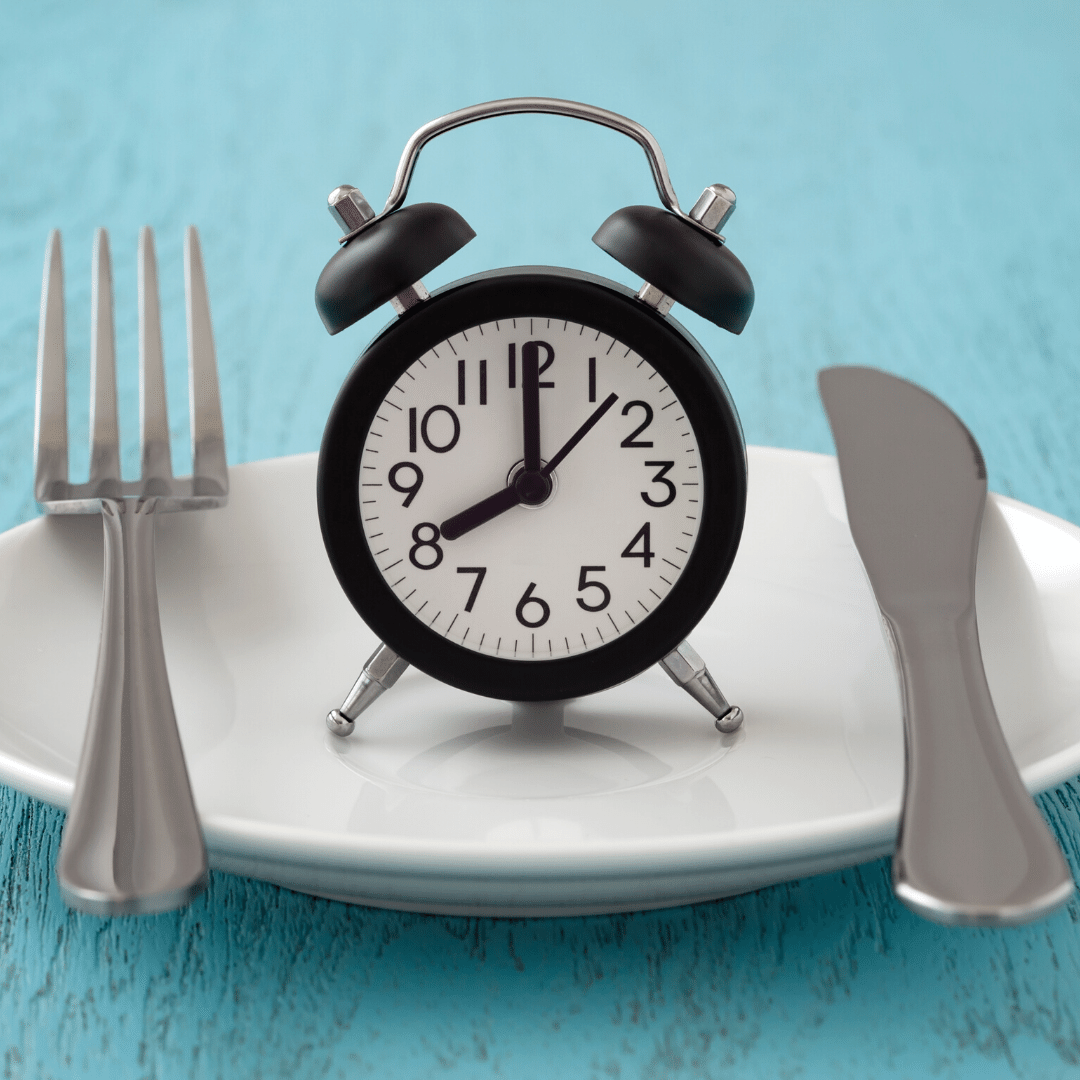
I am often asked what I think about intermittent fasting. I think it can be a great tool for a lot of people to not only lose weight, but also regain energy, clear brain fog, reduce inflammation, ease digestive distress, and increase levels of awesomeness. I’ve written about it before here so I won’t repeat everything, but I did want to touch on some key points that can make or break your fasting experience.
Like most things with diet and lifestyle, intermittent fasting isn’t a magic pill. It likely isn’t going to be the ONLY thing that improves your health, but it could definitely be a big part of it. In the above linked article I do mention people who should not fast so definitely check that out because it isn’t necessarily for everyone
While intermittent fasting is a pretty simple tool to integrate into your life, there are a few key mistakes that you want to be sure to avoid as these can make or break your fasting experience.
Mistake #1: Going all in too soon
Just because you’ve read all about how great IF is and everyone seems to be doing it, that doesn’t mean you should jump from eating every two hours to suddenly fasting for 20. Your body has grown accustomed to however you normally eat. So if you usually eat breakfast right away and then eat every few hours throughout the day, suddenly taking that away is going to cause some big blood sugar drops. Your brain and hormonal response to food intake isn’t going to be able to respond the way you want them to if you suddenly jump into fasting. I advise my clients to first make sure they can comfortably go 12 hours between dinner and breakfast. Then add an hour each day or every few days until you reach 16 hours fasted. Go as slowly as you need to but also know that it still is going to take a little time to get used to it. If you’ve been eating all the time for years, it might just take a few weeks to really get in the groove of fasting.
Mistake #2: Not staying properly hydrated
When you fast your body starts to get rid of toxins more than it does when you are in a fed state. In order to make sure those toxins are properly removed from your body you have to be adequately hydrated. That means drinking at least 1/2 your body weight in ounces of water, and maybe more. Not only that but you want to make sure you aren’t just flushing away electrolytes and not replacing them. Eating only whole, real foods will help to make sure you’re getting proper electrolytes. So will using a good quality unrefined sea salt. Some food sources of electrolytes are nuts and seeds, meats, fatty fish like salmon, mackerel, and sardines, dark leafy greens, avocados, and very dark chocolate (winning!).
Mistake #3: Eating the wrong foods during your eating window
Just because you’ve fasted for 16 hours doesn’t give the green light to just go crazy eating junk the other 8 hours. Not only will that make you feel like trash during your fasting hours, but it’s just pretty obviously unhealthy. But I’ve seen it happen so it’s worth mentioning. Our bodies need real food. They need foods close to their original form in nature. They need micro-nutrients. We don’t need artificial ingredients, preservatives, additives, refined, and ultra processed mumbo-jumbo. Fasting isn’t going to counteract all of that, plus you deserve better than that! You really do. It can take time, effort, and some real work to eat nutritious foods, but you absolutely deserve to fuel yourself well. While it may initially feel like you’re depriving yourself of foods you love, those “foods” are actually depriving YOU of your health and feeling your best.
Consuming a higher carbohydrate diet is going to make fasting more difficult as well. Higher carbs mean higher blood sugar swings which is going to make fasting really hard. Avoiding breads, pastas, sugar, and limiting grains is going to help your body adapt to burning fat for fuel, making fasting that much easier. When you fast and you burn through available glucose stores, your body will have to tap into fat stores. If you are consistently eating higher carb foods, your body is not going to have an easy time tapping into those fat stores. It will be looking for more sugar. If you often feel “hangry” your body likely has a harder time accessing fat for fuel.
Mistake #4: Eating too much OR too little during your eating window
This one really could go either way and I’ve seen both. Sometimes people feel so starving by the time they are going to break their fast that they demolish everything in sight. This generally happens when people make Mistake #1 and don’t ease their way into fasting. If you ease your body into it you will be much less likely to want to shove the entire contents of the refrigerator into your face when it’s time to eat.
On the other hand, I’ve also seen people (generally women) not actually eat enough food during that eating window. It’s not necessarily a bad thing to eat less food, but if you are consistently eating low calorie your brain is going to slow down your energy output. Not eating enough, combined with not eating for longer periods of time, combined with busy schedules, exercise, stress, and all the other things you have going on is a recipe for burn out and probably just an increase of the symptoms you’re trying to avoid by intermittent fasting in the first place. I always advise paying attention to what you’re actually eating first. Make sure you’re eating those nutrient-dense, real foods, and then ease into fasting so you can make sure you’re still providing your cells adequate nutrition.
Mistake #5: You’re not actually fasting
Sometimes people will tell me they have been fasting but then also mention that they only have a “little bit of nuts” or had just a little milk and sugar in their coffee. This is not fasting. Fasting is the absence of calories. To be in a true fast you would consume nothing other than water, black coffee, or plain tea. No artificial sweeteners, no creamers, no nothin’. Even if it’s “just a little bit” of food, your body will still have a hormonal response to the calories you’re consuming and this is what we’re trying to avoid with fasting. Just a little bit of milk and sugar is still going to cause an insulin response which is still going to signal the end of a fast, ending the house cleaning that has been going on during the fast.
Now there is something you could do called “fat fasting.” This is not technically a true fast but it can still be a helpful tool for many people, especially if you are just transitioning into intermittent fasting. An example of fat fasting would be blending coconut oil and/or ghee or butter in your coffee. This is adding calories and technically would break a fast but it can still encourage fat burning in your body. Because you’re only consuming fat, it can help to give you some energy but doesn’t really affect insulin levels so your body still gets the fat-burning message. Plus it’s delicious. This recipe includes some protein and fat so definitely wouldn’t be considered part of a true fast but it can help you transition, keep you in fat burning mode, and help stave off sugar cravings!
I’d love to hear from you!
Tell me, have you tried intermittent fasting? What has been your experience?

I have been doing IF for about 4 months now. At first, the fasting was difficult because I was used to eating every few hours to “rev up” my metabolism. What a fallacy! I started, as Liz suggested, by fasting for 12 hours and slowly worked to the 16. I was a “roll out of bed and eat breakfast person”, but found that as I extending my fasting time, I just wasn’t hungry in the morning. I instead started drinking black coffee (with a little cinnamon roast) and I really look forward to that drink each morning. The roasted flavor helped me to break my creamer dependency. I have settled into a 12-8 or 11-7 eating window, which works well for me and my schedule. Starting later in the morning moves more of my fasting time into my sleep window, so a bit easier for me. Once I became accustomed to the fasting/eating window, I then started paying more attention to what I was eating…following a mostly low carb menu. I am also very mindful of added sugar. As a result, I have lost the fog, am brighter, my joints don’t hurt, and I have lost 12 lbs (after several years of barely eating and losing not an ounce). The other thing that I like about IF is that I feel that it’s the one thing that is clear. You eat during this window, and not outside of it…so, I feel that I finally have clear guidelines in which to work and as a result, have more control.
I love that this has been such a great tool and lifestyle change for you, Catherine! It’s funny how all these things we had been told for so long (eat small meals all throughout the day, eat low fat, etc.) are actually the opposite of what’s best for most people!